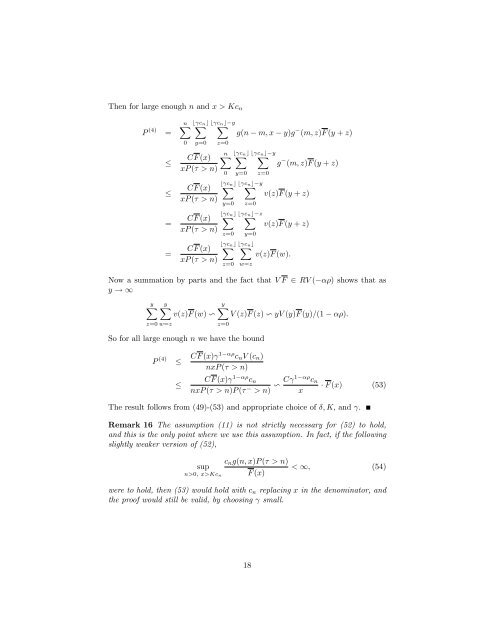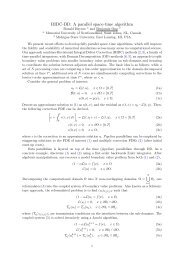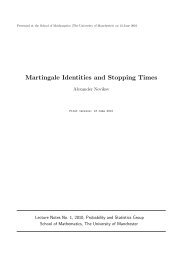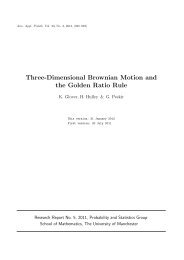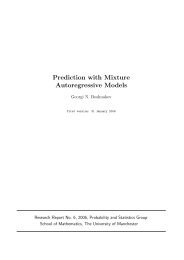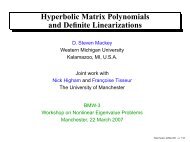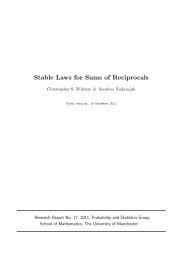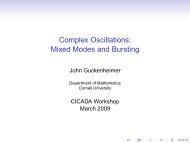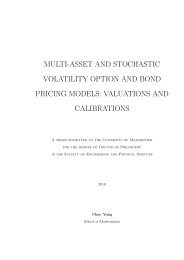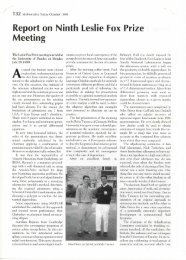Local Behaviour of First Passage Probabilities - MIMS - The ...
Local Behaviour of First Passage Probabilities - MIMS - The ...
Local Behaviour of First Passage Probabilities - MIMS - The ...
You also want an ePaper? Increase the reach of your titles
YUMPU automatically turns print PDFs into web optimized ePapers that Google loves.
<strong>The</strong>n for large enough n and x > Kc nP (4) ===nX0bcX ncy=0bc ncCF (x)xP ( > n)CF (x)xP ( > n)CF (x)xP ( > n)CF (x)xP ( > n)Xz=0nX0ybcX ncy=0bcX ncz=0bcX ncz=0g(n m; x y)g (m; z)F (y + z)bcX ncy=0bc ncXz=0bc ncXy=0bcX ncw=zbc ncXz=0yzyg (m; z)F (y + z)v(z)F (y + z)v(z)F (y + z)v(z)F (w):Now a summation by parts and the fact that V F 2 RV (y ! 1) shows that asyX yXyXv(z)F (w) v V (z)F (z) v yV (y)F (y)=(1z=0 w=zz=0):So for all large enough n we have the boundP (4) CF (x)1 c n V (c n )nxP ( > n)CF (x) 1 c nnxP ( > n)P ( > n) v C1 c n F (x) (53)x<strong>The</strong> result follows from (49)-(53) and appropriate choice <strong>of</strong> ; K; and :Remark 16 <strong>The</strong> assumption (11) is not strictly necessary for (52) to hold,and this is the only point where we use this assumption. In fact, if the followingslightly weaker version <strong>of</strong> (52),c n g(n; x)P ( > n)sup< 1; (54)n>0; x>Kc n F (x)were to hold, then (53) would hold with c n replacing x in the denominator, andthe pro<strong>of</strong> would still be valid, by choosing small.18


